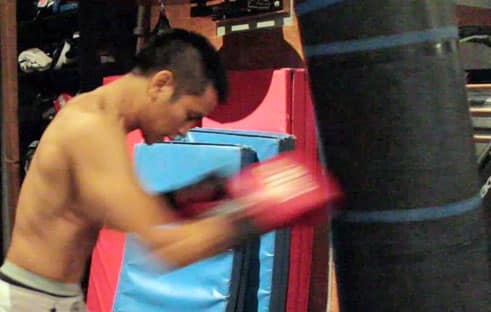
Looking for new ways to train with your heavy bag?
The heavy bag has become the symbol of punching power in pop culture and rightfully so. A punching bag is big, strong, and durable. It’s made to be hit and tempts you to test your power with every shot.
But there’s more to a heavy bag than just power. Use it to develop your punching endurance, punching speed, punch accuracy, and even your footwork! Here are five punching bag drills to show you how.
Watch my video for a clear demonstration of different heavy bag drills!
1. Power Drills
The most obvious way to develop your punching power on the heavy bag is to throw as hard as you can. It’s better (especially for beginners) if you can resist this urge and limit yourself to only 50-80% power output. Power comes from good technique moreso than muscle effort, so power drills should have some focus on technique instead of pure athleticism.
It’s best if you can throw power punches in a realistic manner. Which would be to throw combinations instead of single shots. To throw quickly instead of charging up like a karate master breaking boards. Use good technique instead of mindlessly wasting your energy with each shot. And to throw until the end of the round.
The problem is not throwing with too much power,
but FOCUSING too much on power.
Regular Heavy Bag Drill
It’s not so much a drill but the common way to use a heavy bag. Follow it around and throw heavy punches.
Repeat Combos Drill
I enjoy this one very much because it builds muscle memory. Spend an entire round throwing the same combination or same series of power combinations. In a busy gym, this drill can be run with multiple fighters taking turns hitting and holding the bags for each other while the trainer yells out combinations. For example, the trainer might yell out 1-2-3, in which punchers throw jab-right-hook continuously until he gives the next combination. If the “switch” command is given, then the puncher and holder switch places.
2. Endurance Drills
Small Punches Drill
Hit the bag non-stop with small repetitive punches as fast as you can for an entire round. The focus here is on getting in as many “punches” as possible and breathing properly throughout. Some trainers will tell you to lift your legs as if you’re running which makes it look like you’re taking a step with every punch. You can forget about technique since endurance is about volume and not power.
The best tip I can give for endurance drills is to RESIST throwing with power. So many guys end up trying to work power AND endurance in the same drill that it ends up looking like a power drill. When you’re doing endurance, focus ONLY on throwing as many punches as possible. It might not seem like a real workout but you are actually developing muscle memory so that your arm muscles are used to contracting many more times in a round.
Develop your endurance by
increasing the number of contractions.
Endurance drill tips:
- Try to breathe with every punch.
- Maintain a good posture without leaning into the bag.
- Stand square or at least more square than your normal boxing stance.
- You can aim at any height, many trainers prefer for you to aim at head level to work the shoulders more.
- Your heels are lifting and dropping with every punch.
- Knees are bending and un-bending. No need to pivot with every punch.
3. Speed Drills
Tabata Interval Drill
To develop punching speed on the heavy bag, use the same drill you did for endurance but do them in intervals (also known as tabata drills). The most common interval would be to punch for 15 seconds, and then break for 15 seconds, and repeat till the end of the round. This 15-second timing is perfect because it’s short enough to practice your high-speed burst without tiring out, but long enough to still wear you down.
Once again, make sure you focus on breathing. Feel free to lift your legs if you want. It can be helpful to do tabata drills with a partner so you can take turns hitting and holding the bag for each other. You can also alternate between head level (using straights), chest level (using vertical-fisted straights), and stomach level (using small uppercuts).
Speed drill tips:
- Resist the urge to turn your speed drills into endurance drills by skipping the interval breaks. Rest intervals allow your muscles to relax so that you’re always punching at high speed and therefore developing your hand speed.
- Speed has to do more with muscle contraction rate, rather than technique. Avoid focusing on technique during speed drills.
- Fast breathing equals fast speed. Breathe in smaller shorter bursts of exhalation to increase your hand speed.
- Your heels are lifting and dropping with every punch.
- Knees are bending and un-bending. No need to pivot with every punch.
4. Footwork Drills
Footwork Drill 1 – Move with the Bag
Use a heavy bag that’s able to swing around freely. It’s best if you can find one around 50-75% of your body weight. You need one heavy enough to take punches without flying away with each shot but still light enough to swing away from you. You may have to adjust your punching power to create the desired effect.
Hit the bag as you normally would but keep moving with it. As the bag swings in circles, you circle around with it. At times you may find yourself slipping to opposite sites of the bag and dogging it entirely. The goal is to move with it instead of being stationary and waiting for it to return to you.
Footwork tips:
- Always keep the bag at arm’s distance, follow it when it goes away and back up or circle when it comes towards you.
- Don’t hit it too hard if it moves faster than you can move your feet.
- Try to walk with the bag instead of hopping around in a stiff stance.
- The easiest punch to throw while moving is the jab!
Footwork Drill 2 – Angled Escape
This angled escape drill is to develop good footwork habits on the heavy bag. The idea is to always escape either to your back right or back left and never to go straight back. Throw a combo and then step out to your back right. Throw another combo and step out to your back left (orthodox fighters will require a pivot for this). Keep doing this over and over.
It should look like a very smooth step after your combo, not a jump! Another tip is not to move so far away from the bag that you can’t reach it after moving. When done right, this drill should look as though you’re repeatedly punching while backing away from the bag. A slick mover will look as though he’s simply punching and walking around the bag.
Footwork tips:
- Keeping your feet on the ground keeps you prepared to punch or counter.
- Jumping around only wastes energy and takes you too far out of countering range.
- Try to keep a calm relaxed manner.
5. Accuracy Drills
You wouldn’t think a big punching bag could be used for developing accuracy but there have been several methods of achieving this:
1. Duct tape
What some gyms will do is put duct tape around the heavy bag. Some people have an organized system where they put rings of duct tape separating different levels for head & body punches. Other people have random pieces of duct tape sprinkled around the bag. Regardless of how you place the duct tape, the goal is to raise your awareness and make you aim for something instead of throwing blind punches.
2. Numbered Targets
There are even heavy bags with numbers printed on them for you to practice certain combinations. I don’t enjoy this as much (since the numbers disappear when the bag spins) but it is an option and maybe you will like it.
3. Thin Heavy Bags
I’ve only seen this once back in Canada but I enjoyed it very much. It was a small but very dense heavy bag and very thin, maybe 6 inches in diameter. It hung by a chain but had an elastic rope attached from the bottom to the floor. So it swung like a heavy bag but returned like a double-end bag (a double-end heavy bag?). Very useful and great for developing power punches WITH accuracy.
Punch accuracy tips:
- Accuracy has to do with eye-to-hand coordination, rather than waiting for the right moment (which is timing). You don’t develop accuracy by waiting for the target, you do it by using your eyes to assist you in finding the target. Keep throwing punches and make adjustments to make the next ones more accurate. Don’t sit around waiting for a moving target to slow down.
Develop ALL Your Punches on the Heavy Bag
The most important aspect of the heavy bag is not to get too carried away with punching power. A real fight has all kinds of punches. Sometimes, you need more speed, or more volume…it’s not always about power. The heavy bag, if anything, is meant to develop punching power FOR ALL YOUR PUNCHES (not only your power shots).
After increasing your punching abilities through the drills shown above (power, speed, endurance, etc), apply them to your punches when needed during a fight. Let your punches flow through the various qualities and become whatever attribute you need to win the fight.
All kinds of punches are necessary.
A complete punch arsenal has power, speed, and endurance!
Want to more tips for the heavy bag?






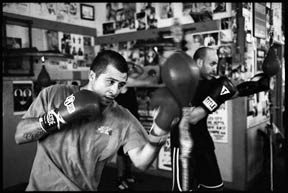
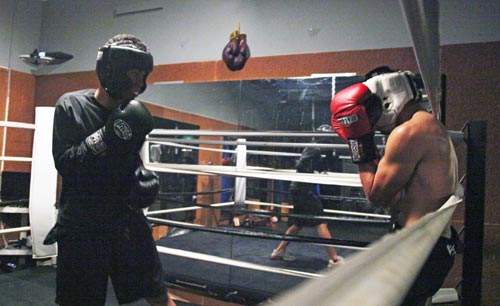
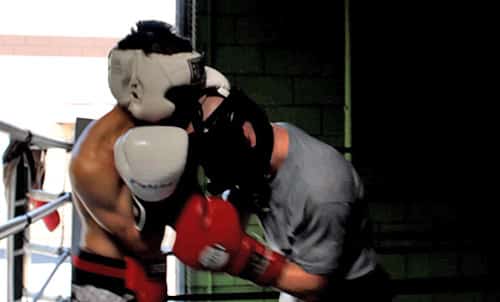
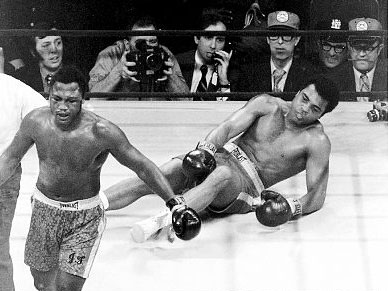

I know exactly what you are talking about when you squat under the bag. with me it wasn’t that the bag was small, it was hung a litter higher than normal.
Johnny, aren’t Tabata interval rest period always half the time of the work period?
Well, I guess not if mine are different. I’m sure there are some guidelines out there rather than official rules as to what defines an official Tabata interval.
Very useful tips for beginners indeed. However, IMHO you could have shot this video with the feet being to be seen, because I am sure some guys have no idea how to move on the feet and even how to stand in place when you do speed and endurance punching.
Thank you for the helpful comments. I’ve added some notes about what to do with the legs during the endurance and speed punching drills.
yes yes, but here we have saying: – it’s better one time to show than ten times to explain.
hi johnny ,, and thx for the amazing article .
a question : is it okay to retreat back to your right or pivot to your left after landing a 1-2 combination in a real sparring session or its just for developing skills on the bag ?
and if its suitable for the real sparring , can you do it after a left hook too ? (like throwing a 3 punch combo ending with left and then retreating to right or pivoting to the left )
and another thing : can you add some tips and drills about mixing punching and slipping in combos ,,
like throwing a jab , slipping to the right (evading the incoming jab of the opponent ), then again coming with a jab to the body or a combo to follow it up . can u add an article about these drills ? or something like mixing footwork and combinations ?
and again ; thx for your informative article
Well, some movement is better than no movement. And tricky movement, even if it seems like a pattern, is still better than just standing around or panic-jumping out of the way.
Can you do it after a left hook? Well try it and see.
Punching and slipping combos, YES. That is on the way.
Hey Johnny I was just wondering what materials or fillers you think are good to fill a heavy bag with?
Does it change a lot what filler you use?
The type of fill has to do with how heavy it makes the bag (easier or harder to move) and the hardness. Personally I prefer something with firmness. Too hard can bend my wrist during hooks and too soft can also bend my wrist if the punch is absorbed awkwardly. And yes, there’s definitely a big range.
I think the worst filler is uneven filler, in that the weight concentrates at the bottom. In many poorly filled heavy bags, it makes the bag really heavy and hard at the bottom and then soft at the top.
Thanks Johnny, you keep coming to my rescue! I hate heavy bag training I always feel awkward and self conscious. I’ll give it a go this afternoon!
Hey Johnny,
I see name brand gloves labelled as bag gloves (still proper 14/16 oz goves) and some as sparring gloves – is there any difference which I use? Are they the same?
I’ve seen brands like Rival advertised this way and wondered if there was any real difference.
For example: Rival Boxing d30 Intelli-Shock Bag Gloves
Does this mean they are not ring approved? They supposedly absorb energy well – is this a good thing or not for bag training?
All the best for the festive season
Yes there is a difference. You should read my guides on boxing gloves for more information. Ring approved or not doesn’t matter because most amateur competitions will usually supply you with their approved gloves.
Tip of the day for hitting the heavy bag: It is correct that not every single shot can be all-out. This leads to injury pretty quickly. However, with 30 seconds or so left in a round, plant your feet and throw either single shots or 3-punch combinations with bad intentions. As with anything, practice sound technique. But this is one of the keys to rocking someone’s world: punch THROUGH the target, not TO the target. The objective of each shot is to visually knock an imaginary foe’s head off. I realize this sounds somewhat harsh, but remember always that the opponent has probably less concern for your safety. By the law of repetition, ” punching power CAN be made. Philosophically, what’s most important is how much your punches damage your foe as opposed to how hard you can mechanically swing. Purposeful Training Always, c-ya, M. Lawrence Pineda.
Guys who never fight nor spar but just enjoy hitting various bags and stuff get very false ideas what’s really going on in a real fight when you have a trained opponent in front of you instead of a punching bag… that’s why I recommend to every young men to go and spar full contact, preferably without any head gear and stuff, just to get a rough idea about real life…
I totally disagree with this. If you’re going to be a street fighter, that’s one thing. But if you’re going to be a trained boxer facing other trained boxers, you need as much protection as possible to PROTECT YOU while you’re busy learning the art. Once you know how to defend yourself, then feel free to remove the safety nets but to do it too early on can easily lead to serious injury when you don’t know what you’re doing. Sparring without headgear is like telling a beginner skateboarder to practice jumping off ramps without a helmet.
Dude’s trippinn. You use the bag to work on your technque, you just can’t develop bad habits while doing it.
@ Antonio: I agree. @ Johnny: i agree too! @ Jonathan: you can easy develope VERRY bad habits when you train too much on the bag!
Hey Johnny, A BIG compliment for your website man!! Keep up the good works! Love it! Great tips and techniques!
Hi Jhonny,
At my first boxing gym..i was taught to keep a horizontal fist when doing the tabata drill. My current gym (MMA) is teaching me to keep a vertical fist when doing the tabata. I personally do not agree with the vertical fist because he does not make any sense. since a punch is always horizontal at the at point of contact. my question to you is.. is it correct if i’am using a vertical fist (stomach height)? if so why vertical and .are there any advantages to it?
Thank you and GREAT tips by the way
it really depends on the situation. It depends on what you’re trying to do. Are you working on form or power? (horizontal fist) Or are you working on speed or arm endurance? (vertical fist). And yes, the level (head/body) and trajectory (straight/curved) of your punches as well as your punching stance makes a difference as to which one would be better.
Great website Johnny and as a beginner I am getting lots of valuable information. Love the tip on doing speed drills on the heavy bag and putting random targets as that will definitely help me out!
Can’t wait to try some of these drills at my next session!
hey ive been just going at the bag as long hard and fast as i can with a speed smash as i call it every 5 mins i hav been think of organizing it into groups spread out over my fourty min so i dont burn out after 15 to 20 and go soft and light after that im thinking 10 mins boxing 5 mins of muay thai 5 mins kickboxing 10 mins karate 5 mins boxing 5 mins free mix umm just wondering if u have any recommendations for the boxing part i go to the gym with a kickboxer, nak muay and two mma guys yeah its just wheights and ropes treadmills etc until the bagwork its rotated i know this is a hard push out but im try to pick up the thai kicks and clinch work ive been training with the friend for a while and have now just about got repeating kicks down ok osu
oh and i case it helps the bag is a tall one that comes down to knee height and goes up to not quite 7 foot
also should we spar before or after bag work
I’d just like to say to anyone filling a heavy bag for the first time not to use sand . . .
Some people advised me to do this on a heavy bag I recently put up and it compacts at the base and is like hitting concrete. It only took around 8 cupfuls of sand to convince me to empty the contents of the bag right back out. Then, I made the mistake of filling it with all of the cr*p in my garage . . . hammocks, plastic bags, paper cups, car engines parts and old hoover attachments etc.
Okay, I’m joking about the car engine parts and old hoover attachments, but my point is that after injuring my right hand on the bag temporarily it dawned on me that it is important to keep the filling uniformed, as in the same type of filling in the bag as a whole. For instance, if you fill it with styrofoam, fill the whole darn bag with it – don’t mix materials. As something a little soft, mixed with something a little harder, becomes much more pronounced when hit with a full power punch, as in very soft and dangerously hard. If you fill it with junk mail scam letters from Nigeria, fill the whole darn bag with Nigerian junk mail letters. Please don’t make the mistake of thinking that filling it with fabric is somehow girly. Fabric can become quite weighty when compacted and will protect your hands more than sand or miscellaneous objects found around your home.
I plan to empty my heavy bag out this weekend, as if I were to proudly string up a killer shark and witness number plates and limbs dropping out of it’s mouth, fill it with fabric, then chalk it all up to experience 😉
Great tip, Kevin. Thanks for sharing!